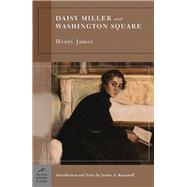From Jennie A. Kassanoff’s Introduction to Daisy Miller and Washington Square
Like Winterbourne and his cohort of reproving Americans, early critics of Daisy Miller took pains to classify and typologize James’s heroine. The Nation, marveling that “no American book of its size has been so much read and so much discussed,” saw the story as a cautionary tale. “It is a perfect study of a type not, alas! uncommon.” Daisy was the garish American tourist par excellence. The journal could only hope that Daisy Miller would find its way aboard “all the ocean steamers” that set sail across the Atlantic, and thereby “be so presented to the ‘moral consciousness’ of the American people that they, being quickwitted, may see themselves here truthfully portrayed, and may say, ‘Not so, but otherwise will we be’” (James’s “Daisy Miller,” p. 106). The critic for the North American Review, Richard Grant White, agreed that “in Daisy Miller Mr. James has undertaken to give a characteristic portrait of a certain sort of American young woman, who is unfortunately too common.” The text, he hoped, would have a “corrective effect” on American travelers: “It is perhaps well that [James] has made this study, . . . which should show European critics of American manners and customs the light in which the Daisy Millers are regarded by Americans themselves” (James’s “Daisy Miller,” p. 107).
Other readers, however, were not so sanguine. Daisy Miller was “an outrage on American girlhood,” they declared (James, Daisy Miller; Pandora; The Patagonia; and Other Tales, p. v). Indeed, her story was so scandalous as to cast doubt on James’s patriotism. The New York Times, for one, took this charge seriously enough to mount a spirited rebuttal. Mr. James, the Times insisted, was obviously “possessed by a sincere patriotism”: Only someone truly committed to his country could “[consecrate] his talents to the enlightening of his countrywomen in the view which cynical Europe takes of the performance of the American girl abroad” (James’s “Daisy Miller,” p. 103).
For his own part, James grew weary of the debate and eventually tried to put the matter to rest. In the twenty-four-volume New York Edition (1909), he summarily dropped the story’s subtitle, “A Study,” and insisted that the tale had neither prescriptive nor descriptive designs on American womanhood. “My little exhibition is made to no degree whatever in critical but, quite inordinately and extravagantly, in poetical terms,” James explained (Daisy Miller, p. vi). His readers were not to confuse art with life: “My supposedly typical little figure was of course pure poetry, and had never been anything else” (p. viii). This effort to contain Daisy’s multiple meanings, however, seems nothing if not a self-conscious parody of Winterbourne’s own effete aestheticism. As Winterbourne strolls into the malarial Roman arena, blithely quoting Byron, he belatedly recalls that “if nocturnal meditations in the Colosseum are recommended by the poets, they are deprecated by the doctors.” As a fictional character himself, Winterbourne’s insistence on the difference between art (the poets) and life (the doctors) is an awkward one. An aesthetic taxonomist of the worst kind, his empirical observations are too little and too late.
In probing such distinctions between art and life, and the generic and the specific, Daisy Miller exposes the tension between what Russ Castronovo has called the conservative “true democrat” and the more revolutionary “radical democrat.” According to Castronovo, the true democrat is the citizen who imagines freedom as a freedom from society. His activist counterpart, the radical democrat, however, sees freedom as the “freedom to participate in the daily forms and activities that constitute community” (Necro Citizenship, p. 142). Winterbourne is, in this respect, the cautious “true democrat.” Because he worships conformity, stasis, and polite restraint, he relies on the bland certitude of standard categories. Faced with Daisy’s “extraordinary mixture of innocence and crudity,” Winterbourne can only accuse her of “a want of finish.” Displaying the true democrat’s antipathy toward inconclusiveness and disorder, he rejects her unfinished appearance—an appearance that threatens democratic consensus and closure (see Nelson, p. 240).
Unlike Winterbourne, who begins and concludes Daisy Miller in the same place —“‘studying’ hard” in Geneva and rumored to be “much interested in a very clever foreign lady”—Daisy herself charts a dynamic path through the text. Resisting the docent culture of museums where “dreadful old men . . . explain about the pictures and things,” she insists instead upon unscripted, unmediated encounters with the real. She rejects tour guides of all sorts, balking at the repeated interference of the “vigilant matrons” who would police her behavior. Like her literary successor, Isabel Archer in The Portrait of a Lady (1881), Daisy wants to “see for [her]self” (James, The Portrait of a Lady, p. 203). She longs to generate “a little fuss”—to experience the messy turmoil of direct, democratic engagement. Thus, when the American ingénue bids goodnight to Winterbourne after their first meeting, she playfully remarks, “I hope you are disappointed, or disgusted, or something!” Craving dissent, Daisy seeks a public sphere in which one can speak one’s mind without the stifling intervention of self-styled representatives or chaperones.
